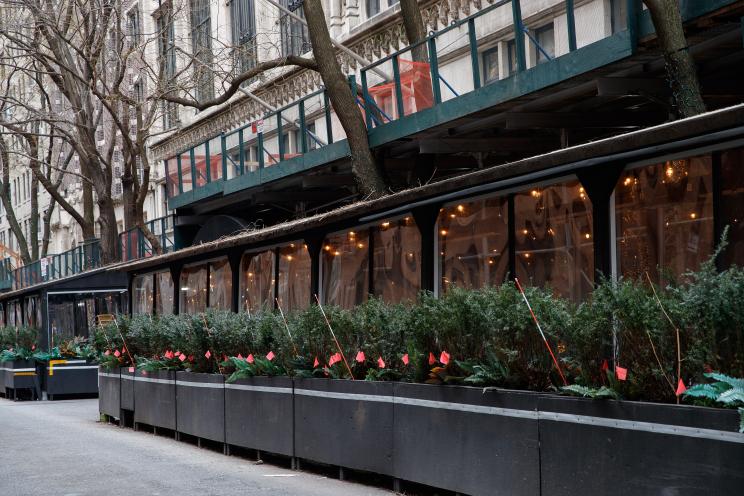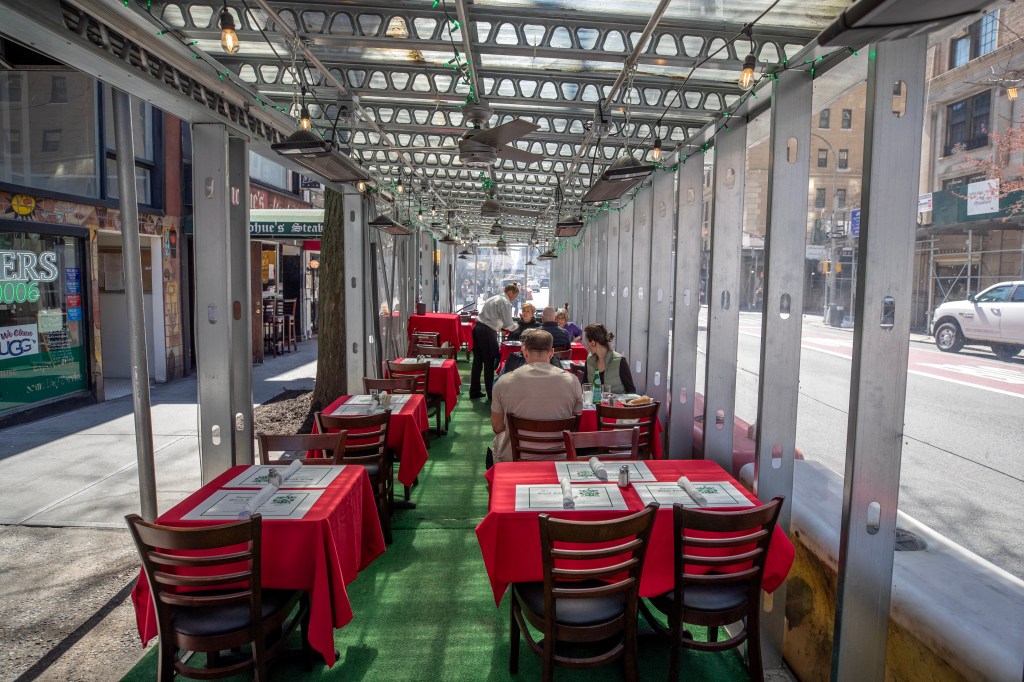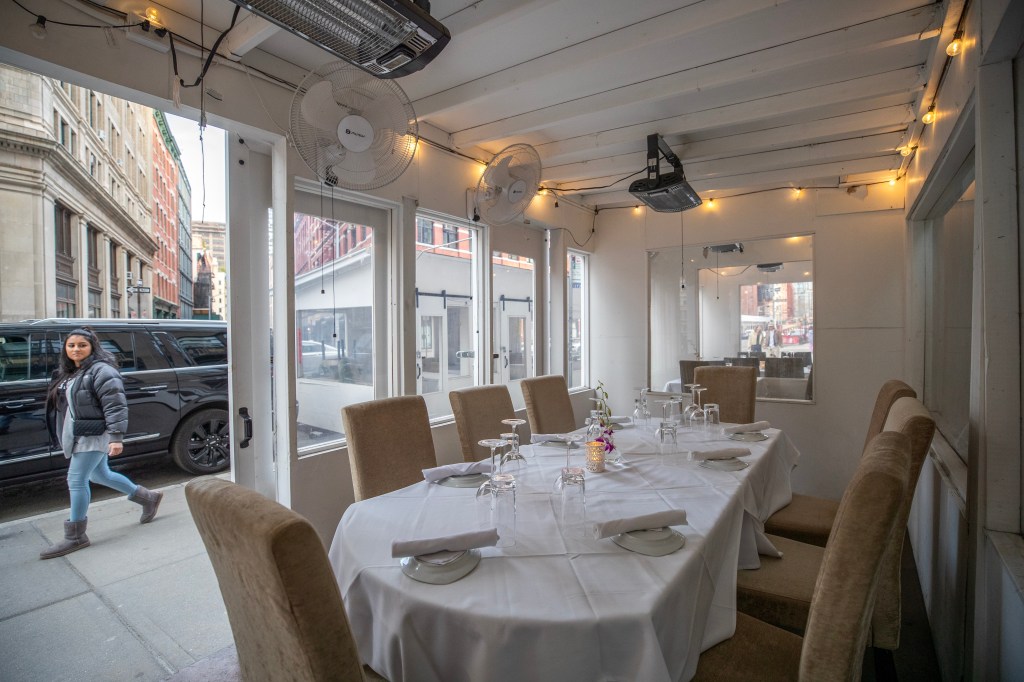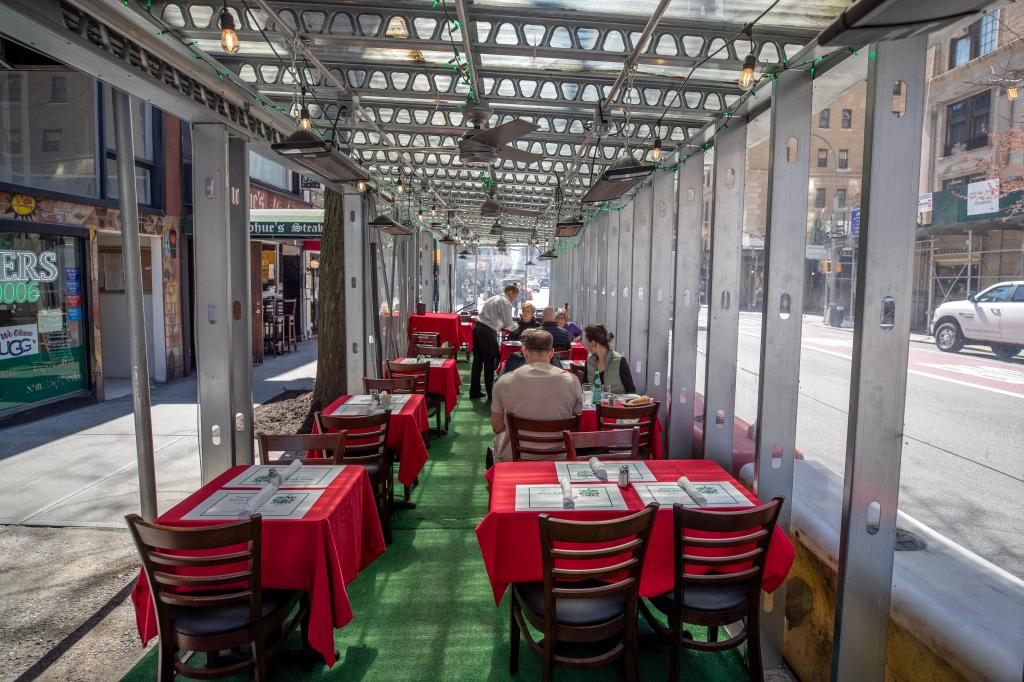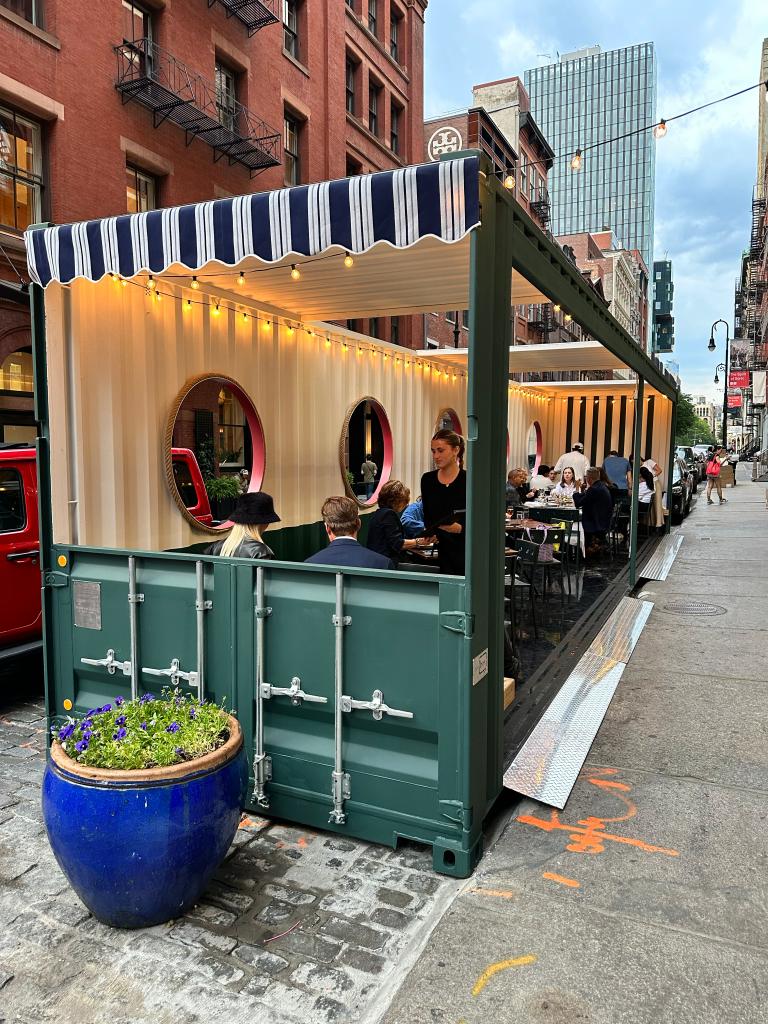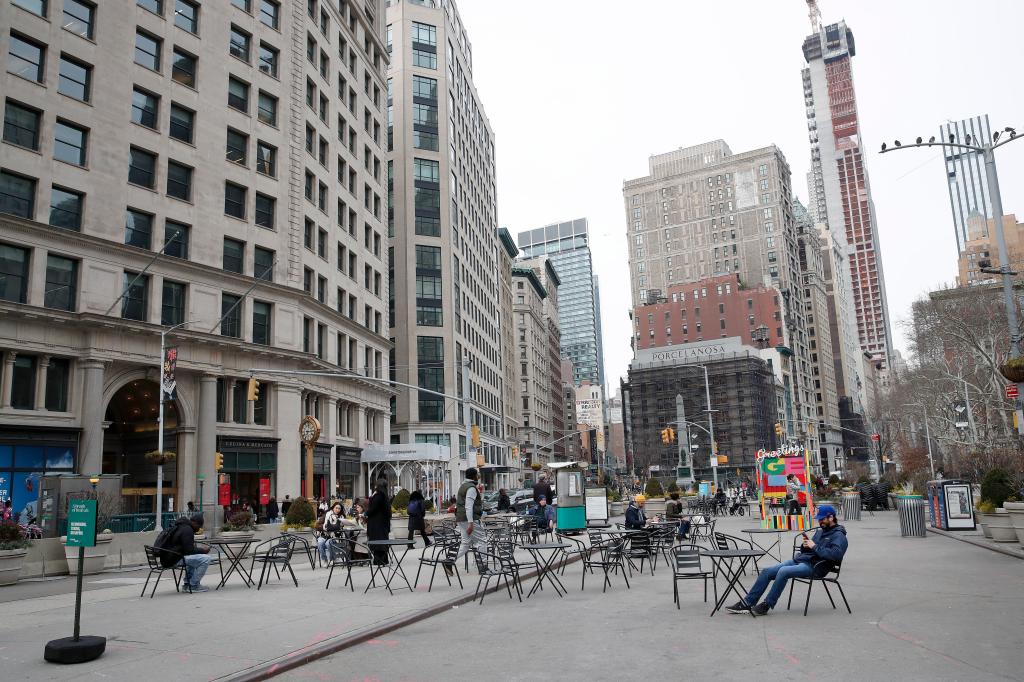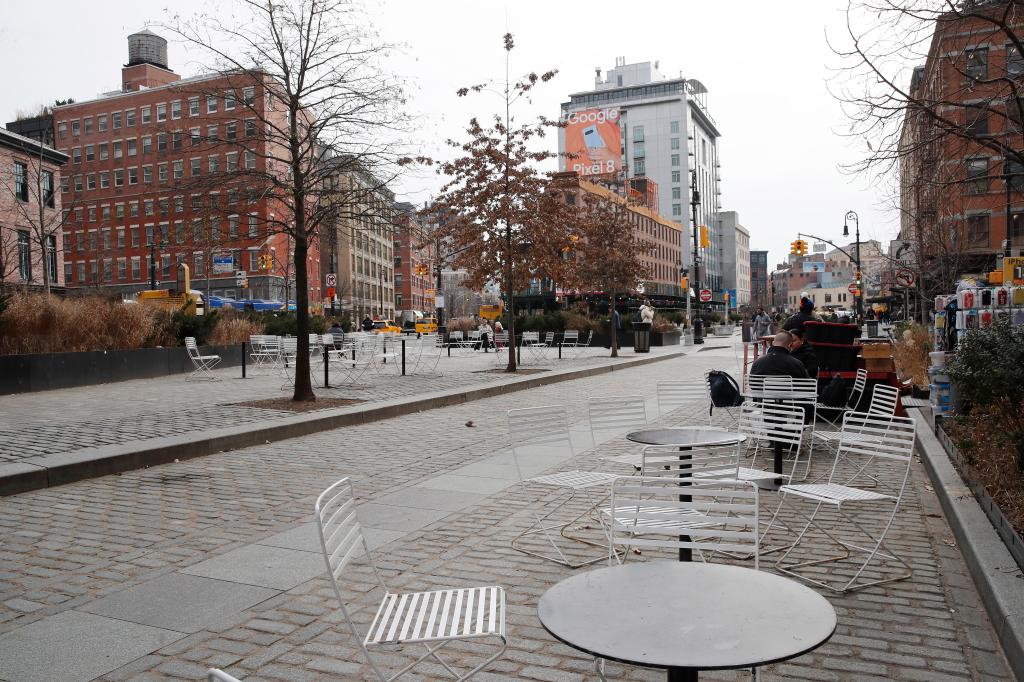Big Apple restaurants that were hooked on easy money from rent-free “streeteries” are now being told by City Hall: Eat this!
New rules for outdoor dining that were released last week by the Department of Transportation spell welcome, if overdue, doom for nearly all of the ghastly, street-based dining sheds that have blighted the Big Apple long since the pandemic — and the need for them — was over.
Sadly, collateral damage will be the handful of truly creative, well-built structures that helped to brighten some neighborhoods, such as Fresco by Scotto on East 52d Street and Donohue’s on Lexington Avenue and 63rd.
Every restaurant that wants a street shed — whether or not it already has one — must apply for a new operating permit next month. Some owners say they’ll fight to keep their existing structures. But 31 pages of confusing regulations plus a jillion online “set-up guides” will enrich legions of lawyers and consultants while driving baffled owners to drink.
As Rosanna Scotto, co-owner of Fresco by Scotto on East 52nd Street told me: “We have not really figured it out yet. Please let me know if you do.”
Brian Owens, a partner in Crave Fishbar and Taco Vision, said: “We are already governed by so many agencies that we are used to hiring expeditors and lawyers to navigate the confusing rules. God knows we have enough to worry about then to try to figure out the intricacies of these new rules.”
The DOT’s regulations for al fresco sidewalk cafes, long a fixture of warm-weather Gotham life, are mostly reasonable. But those for “roadway” setups — the lightning-rod issue in neighborhoods such as Greenwich Village, where the number of outdoor eating venues soared from 200 to 900 over the past four years — are a case of City Hall choking on its own bureaucracy.
Everyone knew the Wild West-like sprawl of vermin-friendly, environment-despoiling street sheds needed to end. But owners got used to having profitable, rent-free private space on streets that are supposed to be public. They thought they’d stand forever thanks to City Hall’s dithering and deceptive claims about making outdoor dining “permanent” (it already was permanent on sidewalks — but not in streets).
But former Mayor Bill de Blasio, a slave to car-haters who like anything that removes parking spaces, did nothing. Mayor Eric Adams could and should have struck down all the roadway sheds the day he took office in January, 2022. It was not the migrant crisis, after all.
Adams instead punted to the snail’s-pace City Council, which took its sweet time coming up with a crackdown plan and disguised it as an attempt to “improve” their looks and safety and requiring owners to pay license fees.
In fact, all 10,000-odd existing streeteries must be taken down by the end of November unless owners jump through impossible hoops. They must be “open-air,” easily removable, wheelchair-accessible and drainage-equipped. They must use materials such as fire-resistant fabric to replace solid walls and soft-top umbrellas as roofs — which means diners will get soaked in the rain.
But “open air” is absurdly undefined — i.e., exactly what percentage of a shed’s sides must be open? — and an astounding omission considering that the City Council and the DOT have been working on the issue for two years. Andrew Rigie, executive director of the New York City Hospitality Alliance, interpreted the language to mean: “There are no full walls — only the barriers and the screen on the side that runs parallel to the traffic.”
Tell that to the lawyers!
To further torture owners, any replacements they build in spite of the limitations must be dismantled every year between November and April — a cost that few can afford.
A very few restaurateurs deserve sympathy. They spent small fortunes to make streeteries safe, attractive and fun.
It’s likely arrivederci to the cozy, enclosed street cabins at Il Gattopardo and Leopard des Artistes, which cost owner Gianfranco Sorrentino and his partners $60,000 to build. He said he thinks “it will be mandatory to take them down.”
It’s definitely goodbye to the Indian village-like street cottages that Tamarind Tribeca owner Avtar Walia spent $135,000 to install, which he said he’ll take down this summer.
Say hello to “open-air” street cafes which look in DOT drawings like the hideous “plazas” the agency stuck in the middle of avenues — ideal for eaters who enjoy bus fumes with their meal. Maureen Donovan-Peters, owner of Donohue’s steakhouse predicted they’ll turn into “homeless camps” as many of the city’s plazas have done.
She told The Post that her sleek, heated street cabin of steel and plexiglass accounted for 35% of revenue. And she might not renew her lease if those customers won’t return indoors.
The Scotto family spent $160,000 to erect Fresco’s pretty, Capri-themed, lemon-grove-like roadway cabin — but it’s likely to be chopped liver under the rules.
A few owners claim that their existing structures already meet the new rules.
“We expect to file a schematic plan that shows what we’ve done and an engineering report to show how we even exceed the safety regulations,” Lure Fishbar’s John McDonald said of his seamless, corrugated steel structure with an open front and a half-open roof.
Stephen Starr, whose empire includes Pastis in the Meatpacking District, said his “team is assessing it with our lawyer” and thinks “It won’t be that much of a big deal” to bring the 30-seat Pastis sheds, which are open on one side, into compliance.
Rigie promised to help steer owners through the maze: “We’re working with the city to host presentations and Q&As to walk restaurateurs through the process.”
But it’s going to be a long walk — and a long year — for embattled restaurateurs who must decide whether the new rules are more than they can chew.

